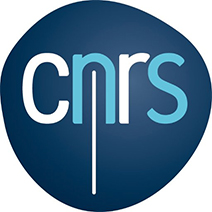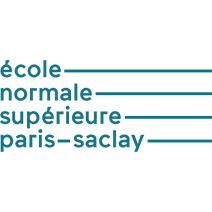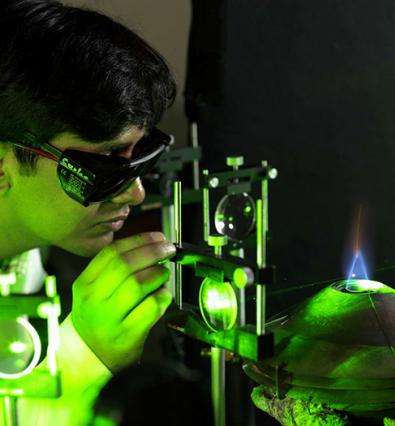
Ultrafast Nanophotonics and Nanothermics
This CentraleSupélec team, integrated with its Research Center since September 2010, is associated with the Quantum and Molecular Photonics Laboratory and ENS Cachan, and CNRS Institut d’Alembert.


Research Topics
Ultrafast Plasmonics in Metallic Nanoparticles
High-quality metal nanoparticles have remarkable optical properties associated with the plasmon resonance phenomenon. A great many current developments in the field of plasmonics arise from these properties. In order to better understand the physics processes involved in this area, it is relevant to study the dynamic around it following light pulse excitation. This subject is therefore based on the development of modeling methods adapted to the various time scales involved and the implementation of ultrafast laser spectroscopy techniques.
Photo-induced Heat Transfers on Small Time and Space Scales
This research is, firstly, to study optical heat generation and its transport on the nanoscale and at short times, for which conventional approaches are no longer valid; secondly, it is possible to structure the material so as to make a thermal excitation consistent, for example by using phonon-polariton phenomenon coupled with a photonic cavity. This topic is developed by the team in partnership with the S. Volz team at the EM2C Laboratory.
Heat Nanosources for Chemistry and Biology
Metallic nanoparticles under light irradiation have the ability to behave like nanometric heat sources. This conversion process can be utilized in various fields, in particular, for optical, chemical or biological functions. Thereby, materials or devices with a functionality that is only activated by light can be considered. Through our collaborations, we are developing several projects geared towards biomedical applications (improved targeting of cancer cells with nano-hybrids for localized hyperthermia treatment, plasmonic liposomes for targeted drug delivery).
Light-heat Nanoconversion: Photonic Applications
With the localized plasmon resonance phenomenon, it is possible to effectively and very quickly inject energy into metallic nano-objects. Through the succession of resultant exchanges and relaxation mechanisms, the optical properties of the composite medium, where the nanoparticles have been dispersed, are transiently modified. By working on both these photo-induced changes on the nanoscale and the packaging of composite medium in wavelength-scale structured devices (electromagnetic cavity, photonic crystal), optically controlled photonic functions can be achieved. This principle can be extended to the field of nonlinear optics: ultrasensitive sensors can then be considered.
Key Figures
- Instructors: 1.5
- Research engineer: 1
- Administrative assistant: 0.5
- Post-docs: 2
- PhD students: 1
- Peer-reviewed articles: 5
Scientific Partners
France : Molecular and Macroscopic Energy, Combustion (CNRS/ECP); Physical Chemistry Laboratory (Paris-Sud University); Science and Engineering of Soft Matter - Physical Chemistry of Polymers and Divided Media (ESPCI Paris); UMR_S728 Université Denis Diderot (Université Paris Diderot) - Inserm; Supramolecular and Macromolecular Photophysics and Photochemistry (ENS Cachan); Physical Chemistry of Electrolytes, Colloids and Analytical Sciences (CNRS/Pierre and Marie Curie University).
International : Institute of Optics “Daza de Valdés” (Spain), University of Sistan and Baluchestan (Iran).
Fields of Application
- Use of metallic nanoparticles in cancer therapy through nanohyperthermia
- Optimizing other types of biological applications, such as the targeted delivery of active substances, microfluidic photo-actuation, ultra-sensitive molecular sensors, and photothermal imaging
- The use of these properties in the field of ultrafast photonics
CONTACT
Website: www.lpqm.ens-cachan.fr
Director: Isabelle Ledoux-Rak
Director: Bruno Palpant
Tel.: +33 (0)1 41 13 16 26
E-mail: bruno.palpant@ecp.fr




